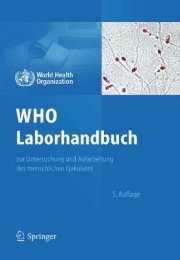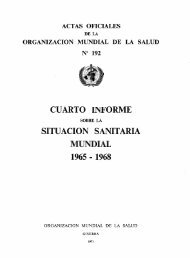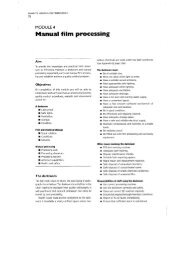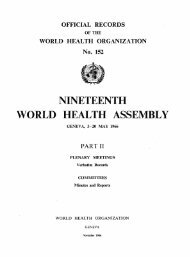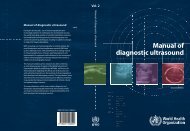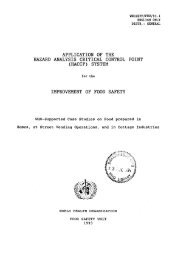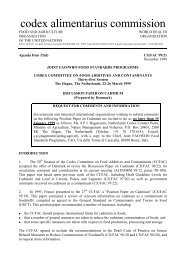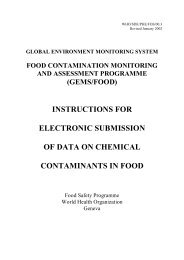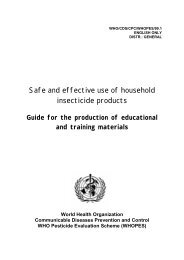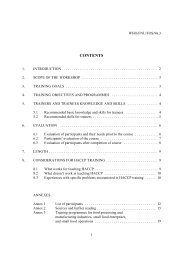IPV BSL-3/polio containment guidelines (Feb 2003) - World Health ...
IPV BSL-3/polio containment guidelines (Feb 2003) - World Health ...
IPV BSL-3/polio containment guidelines (Feb 2003) - World Health ...
You also want an ePaper? Increase the reach of your titles
YUMPU automatically turns print PDFs into web optimized ePapers that Google loves.
or contamination at the point of use should not result in a breach in <strong>containment</strong> via<br />
the water system. Water loops should be maintained at 80°C or greater, and dead<br />
legs should be avoided. Heat exchangers may be used to cool water at the point of<br />
use provided that water from the exchanger is not returned to the loop leading<br />
20<br />
outside of the <strong>containment</strong> area. If there is an accidental release of <strong>polio</strong>virus in the<br />
areas served by the water loop, or if the circulating temperature of the water system<br />
drops below its set point to an extent identified by the risk assessment, an alarm<br />
should sound and the system temperature should be raised to a temperature and time<br />
period validated to kill <strong>polio</strong>virus before taps can be opened outside or inside the<br />
<strong>containment</strong> area.<br />
4.23 A communication system consistent with the facility <strong>containment</strong> conditions should<br />
be maintained between the support or administrative area and the <strong>containment</strong> area<br />
and shall be kept in working order at all times.<br />
4.24 Emergency lighting and power to the <strong>containment</strong> area and critical <strong>containment</strong><br />
devices (e.g. biological safety cabinets and air handling systems) should be<br />
available and automatically activated in the case of a power failure.<br />
Sterilization and waste disposal systems<br />
4.25 Decontamination of solid, liquid, and gaseous wastes should take place within the<br />
<strong>containment</strong> area. Should any wastes have to be transported out of the facility prior<br />
Adopted by the 53 rd meeting of the WHO Expert Committee on Biological Standardization, 17-21 <strong>Feb</strong>ruary <strong>2003</strong>. A definitive<br />
version of this document, which will differ from this version in editorial but not scientific detail, will be published in the WHO<br />
Technical Report Series.



